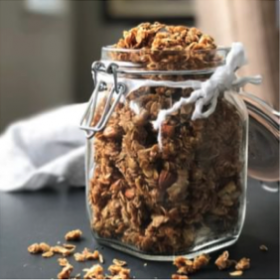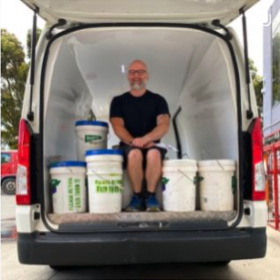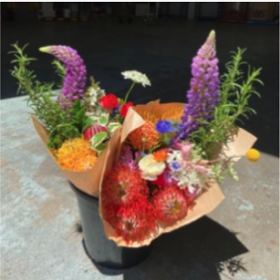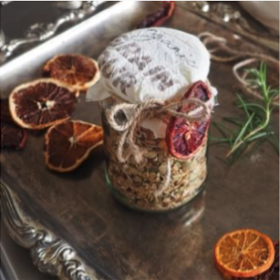Ingredients
1/4 cup warm water
½ tsp caster sugar
2 tsp active dry yeast
85g butter, softened
1 cup caster sugar
4 large eggs
Juice of 1/2 lemon and 1/2 orange
Zest of 1 medium lemon and 1 orange
½ teaspoon Salt
3/4 cup milk, scalded and cooled
6 cups plain bread flour
1 egg (for egg wash)
1 tbsp water
3tbsp raw sugar (optional)
Summary
Paska is a sweet yeasted bread eaten all over Eastern Europe during Easter. In Ukraine, Paska is part of the religious offering taken to church on Easter Sunday to be blessed before returning home and feasting with family. The bread itself has similarities to brioche, panettone or babka – it’s rich and delicately sweet with warming flavours of citrus, raisins and sometimes saffron. This recipe is an all-day project, but what are long weekends for if not kneading a gorgeous loaf of bread to share with loved ones? We’re sharing this recipe to show support and solidarity with the Ukrainian people, we encourage anyone who makes it to donate directly to Cook For Ukraine and share their Paska creations on social media using the hashtag #cookforukraine 🇺🇦 💙 💛 💙 💛 💙 💛
Paska
Makes one large loaf, or several small loaves
Combine sugar and warm water in a medium sized bowl. Sprinkle yeast on top and gently incorporate. Allow to sit for 10-15 minutes, until bubbly.
In a very large bowl or a stand mixer, cream together butter and sugar until pale and fluffy, around 7 mins. Add eggs, one by one, and continue to beat until well incorporated. Add juices, zest and salt and mix until combined. Finally, add scalded milk and beat until smooth.
To the same bowl, add 3 cups of flour and using a wooden spoon, mix until it forms a craggy messy dough, then add yeast mixture, mix until incorporated. If you have a dough hook attachment for your mixer, affix it now, otherwise, get ready for a workout.
Slowly add remaining flour until a coherent dough comes together. It should be only very slightly sticky to the touch – not too sticky, not too dry. Add the raisins (if using) and briefly knead them in to distribute throughout the dough.
If kneading by hand, turn dough out onto a floured surface and continue to knead for about 10 minutes (breaks are allowed). If using a stand mixer, continue to knead using the dough hook for about 5 mins more. The dough should be smooth, elastic and no longer sticky.
Put dough into a lightly greased bowl, cover with a damp tea towel and allow to rise in a warm spot until doubled in size, about 1 ½ – 2 hours. Once doubled, beat down the middle of the dough and allow to rise another hour.
Reserve about ⅓ of the dough for decorations and divide the remaining dough out among the pans you’ll be using (grease them well with butter first). For reference, we used one 21cm springform cake tin and two 250ml cans – if using cans, ensure they no longer have a lip, as the bread will be impossible to get out if they do!
For the main body of your bread, you’ll want the dough to fill about ⅓ of each baking tin. Cover pans and reserved ⅓ dough and let rest another 30 mins.
Once rested, use the reserved dough to make designs on the top of each loaf. Braids, twists, curls, crosses and rosettes are popular/traditional, but have fun with it. Toothpicks can be used to help secure designs in place until after baking.
Cover your finished loaves and allow them to rest one last time for 30 minutes. While your dough is resting, whisk together the remaining egg and water to create an egg wash and preheat oven to 180°C.
Once rested, brush the entire top of each loaf with egg wash* and bake loaves for 10 minutes. Without opening the oven door, lower the heat to 165°C and continue to bake for another 40 minutes, until deeply golden and brown on top.
Cool Paska for 10-15 minutes, then gently remove from pans and transfer to a wire rack to continue cooling.
Paska is delicious fresh or toasted with lashings of butter. It makes tremendous bread and butter pudding and freezes well in slices if you happen to have any left!
*if you’d like some extra crunch, sprinkle raw sugar all over the top too!
Hints and Tips
This recipe was adapted from this recipe by Marie Porter




thank you so much for sharing a paska recipe. albeit for such awful reasons, it’s so great to see the interest in ukrainian culture and traditions in the broader australian community. thank you for your support.
Thank you for this message. Learning about Paska was delightful – all the different fillings, loaf shapes and decorative toppings. Our hearts go out to Ukraine this Easter ️